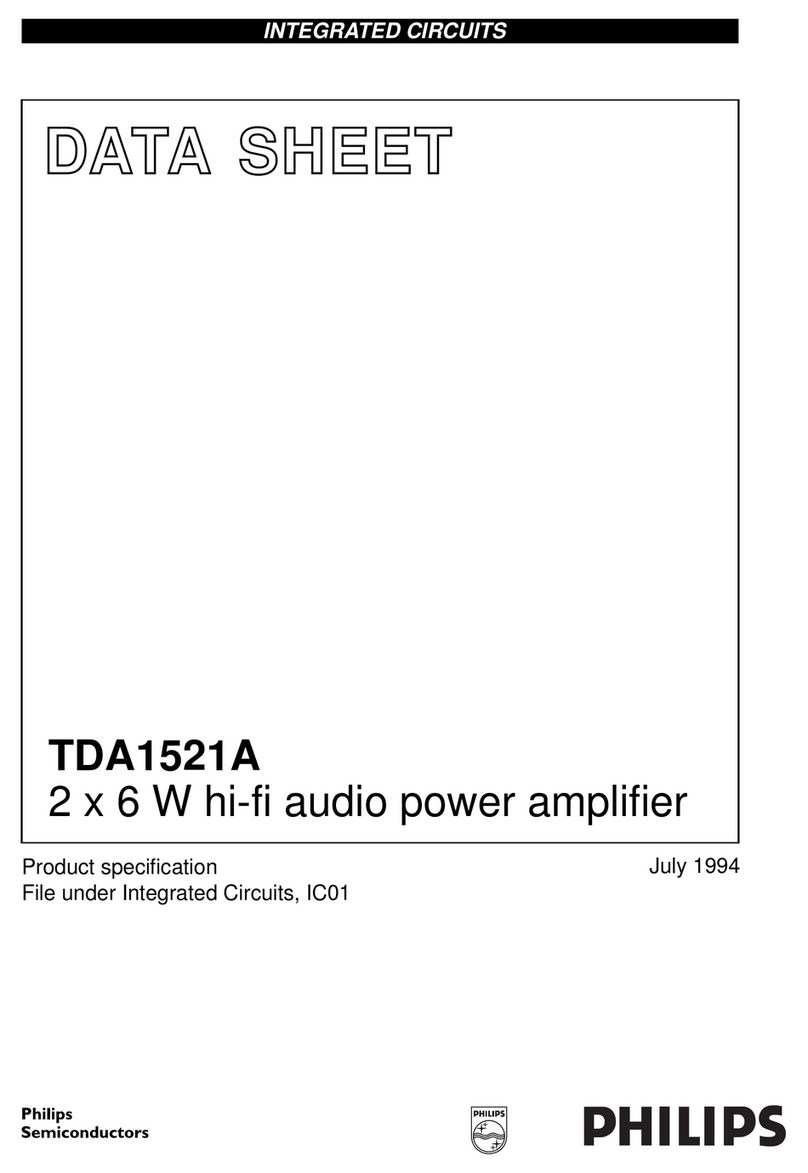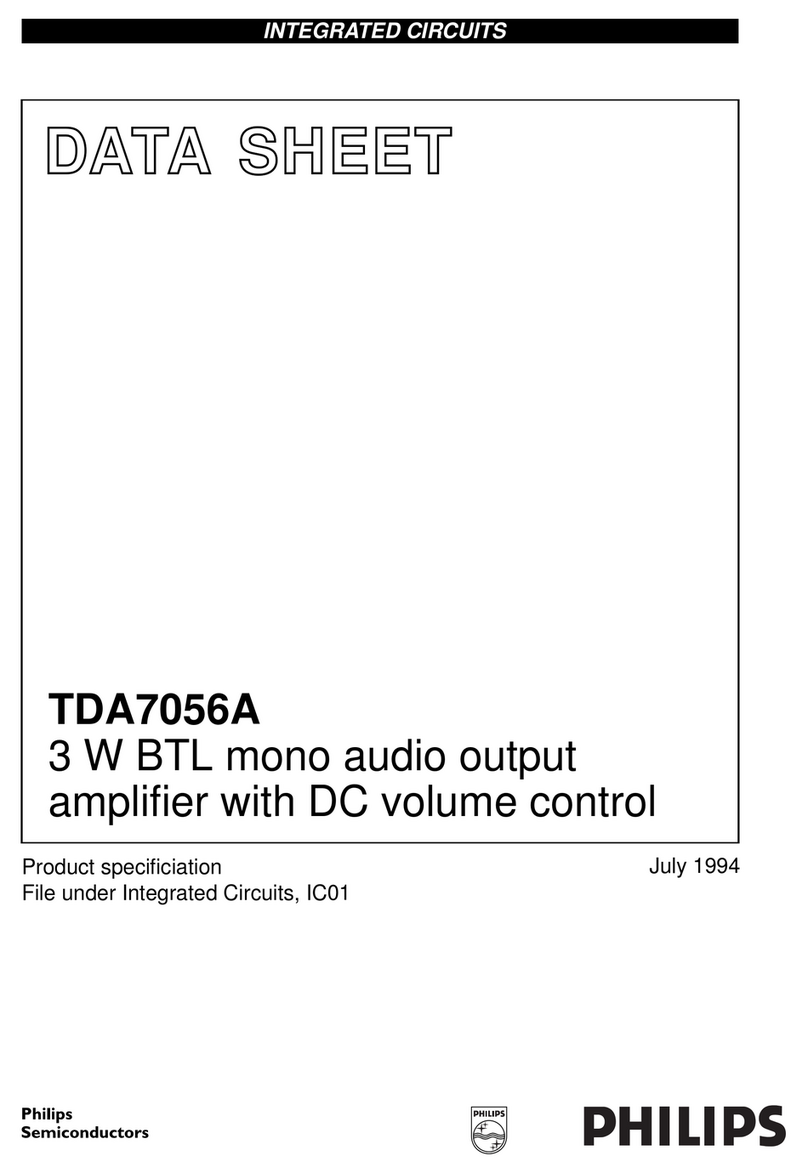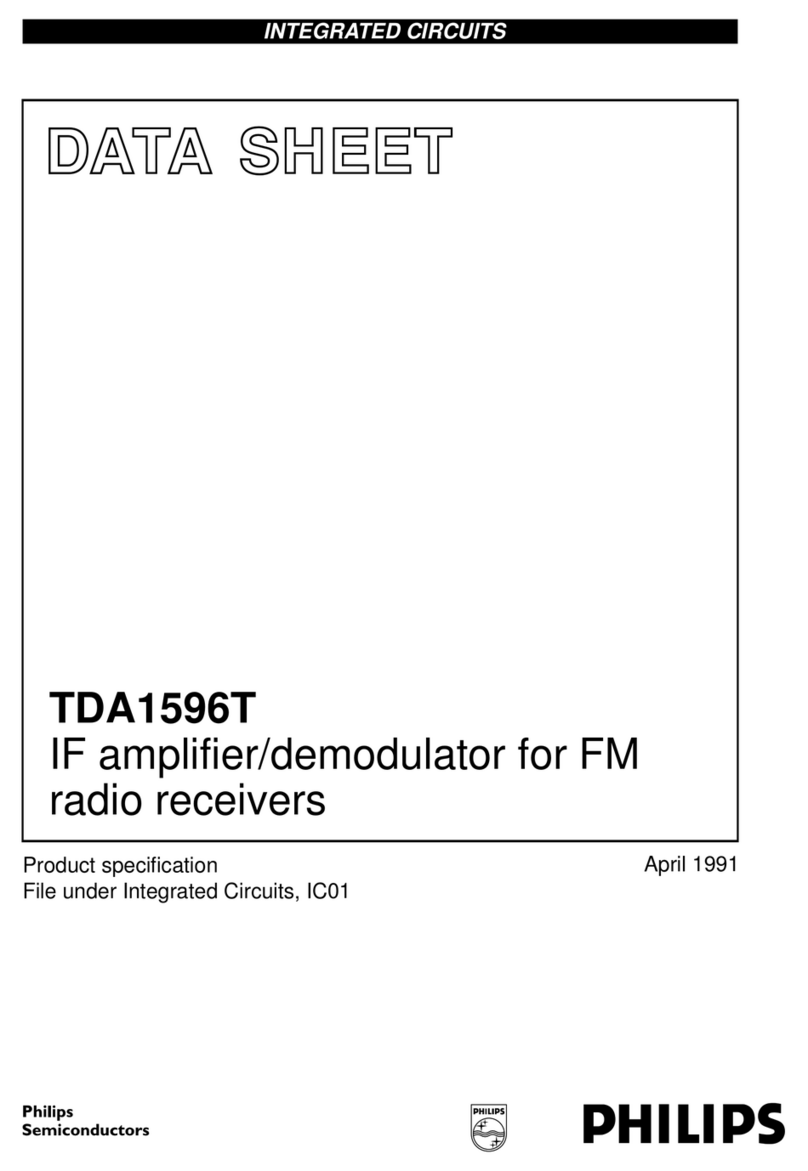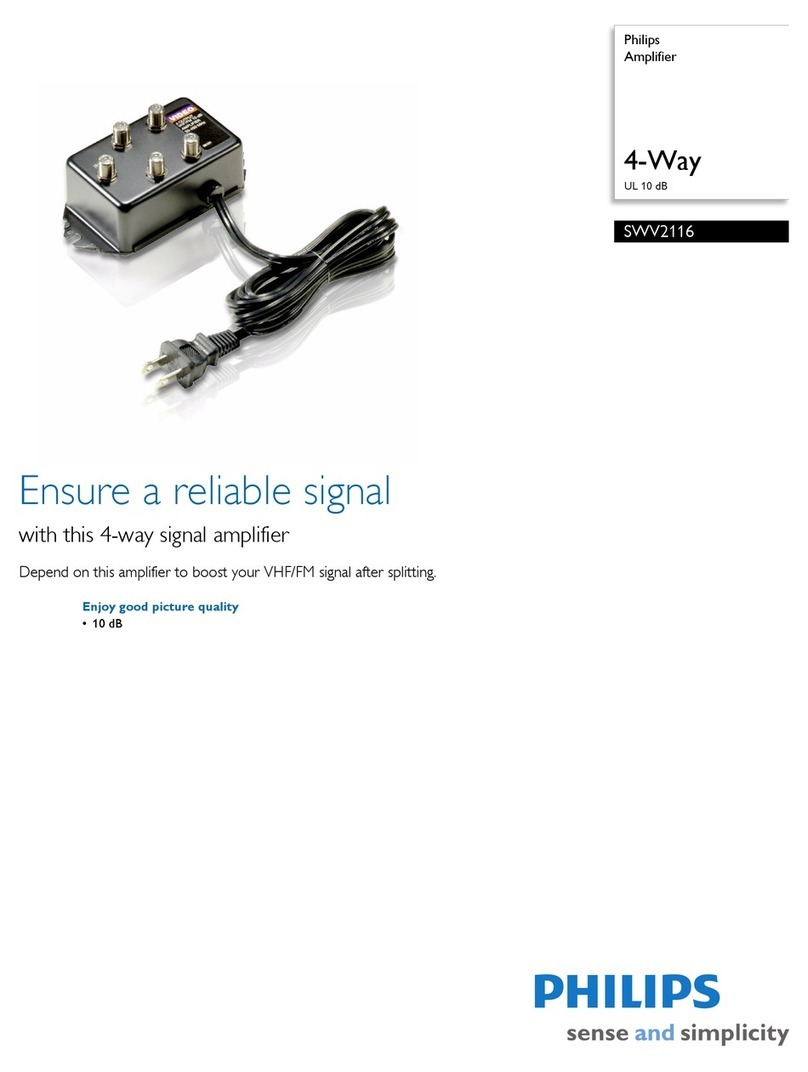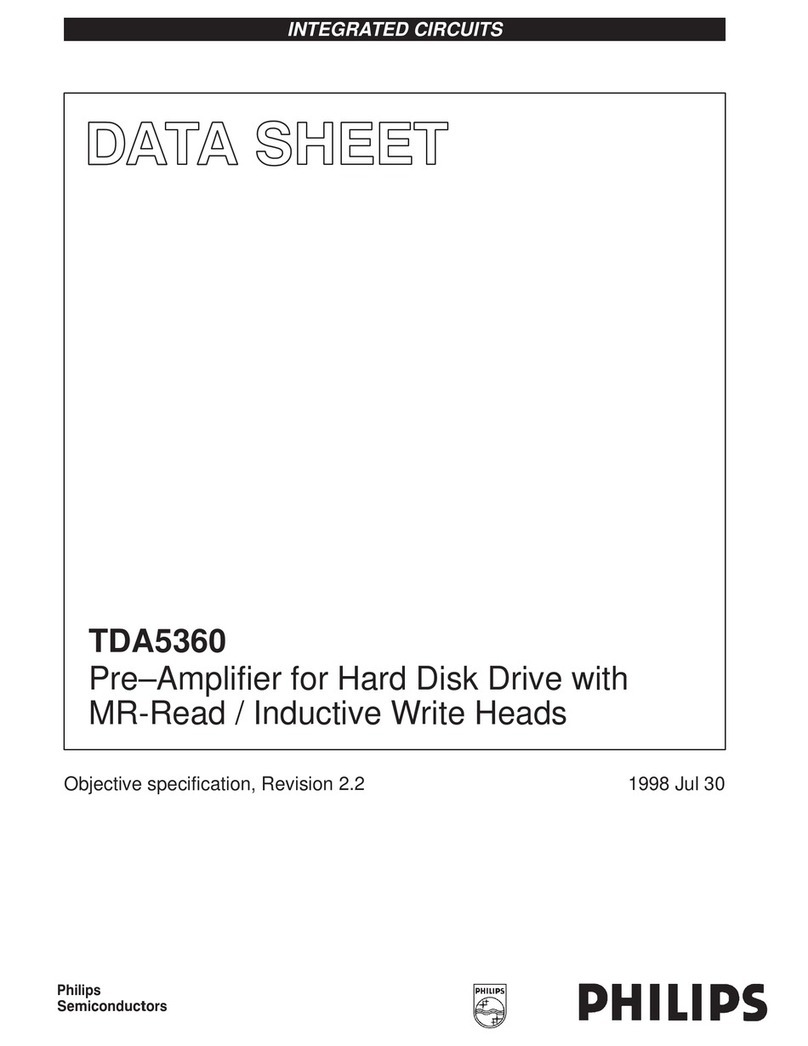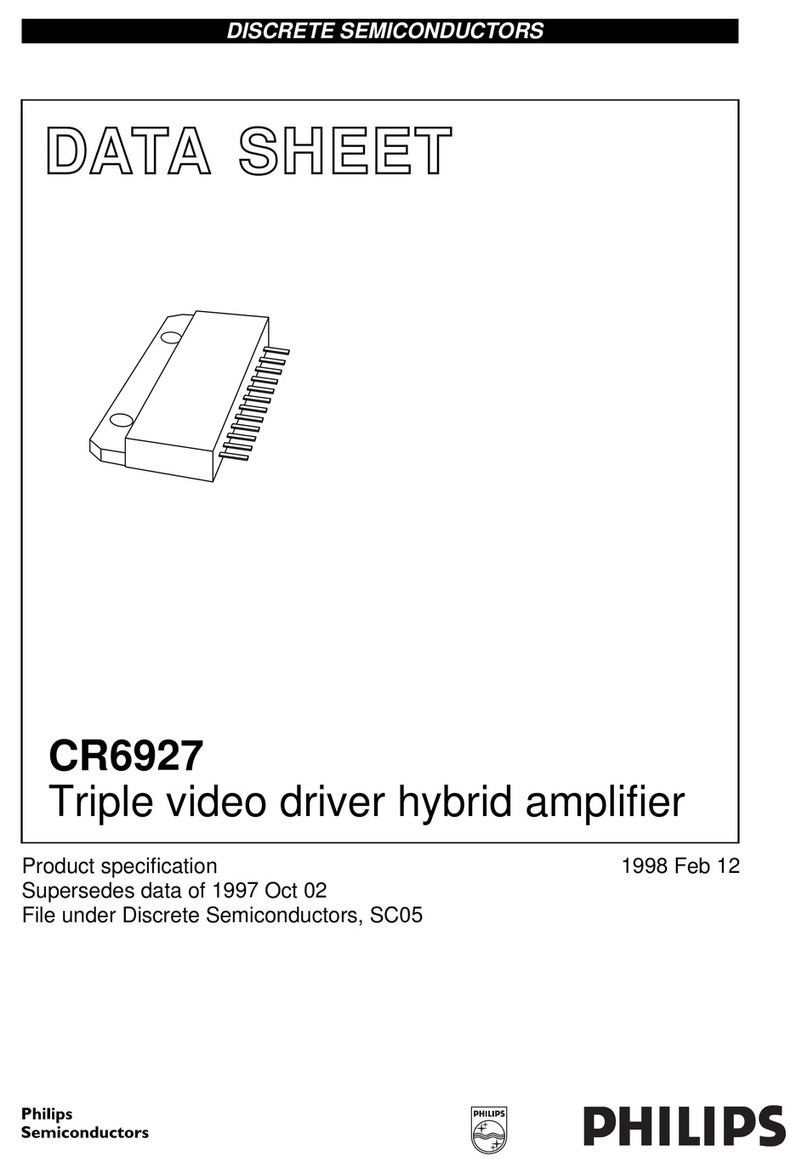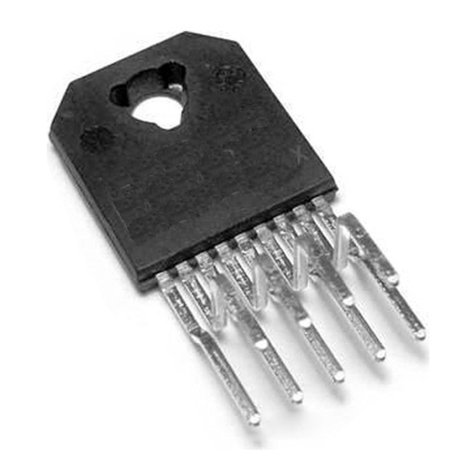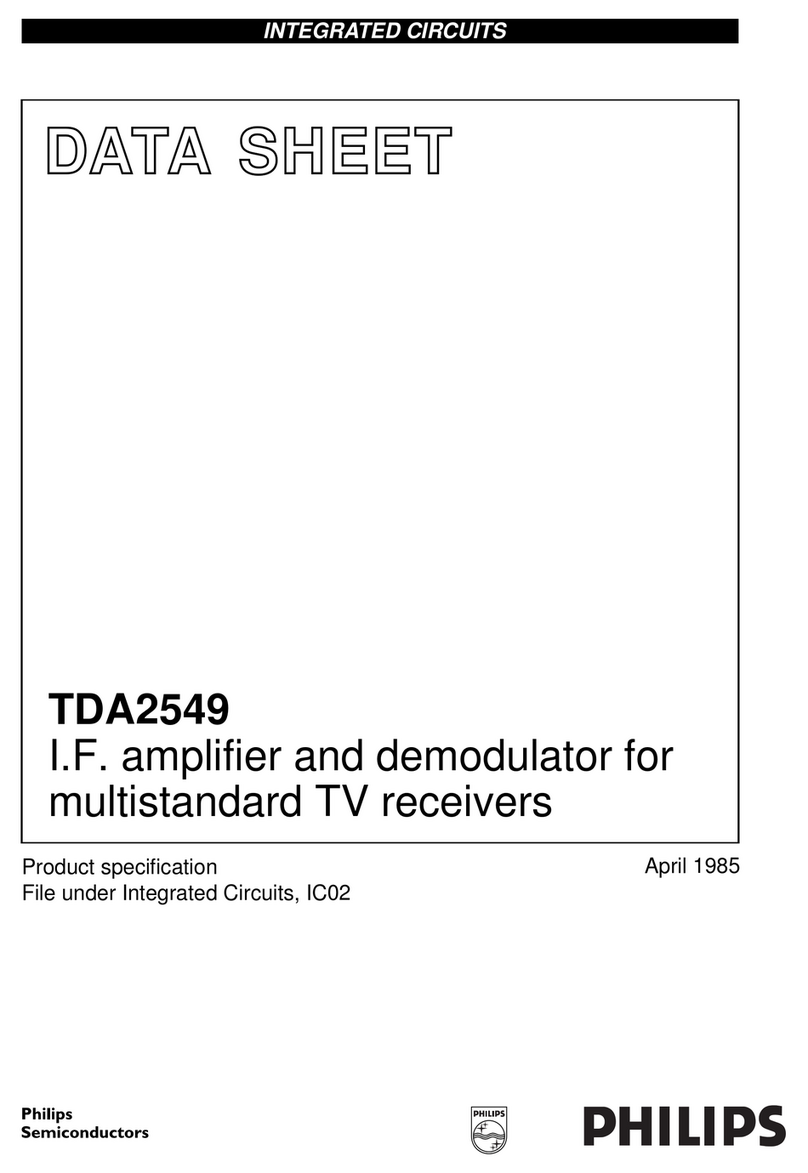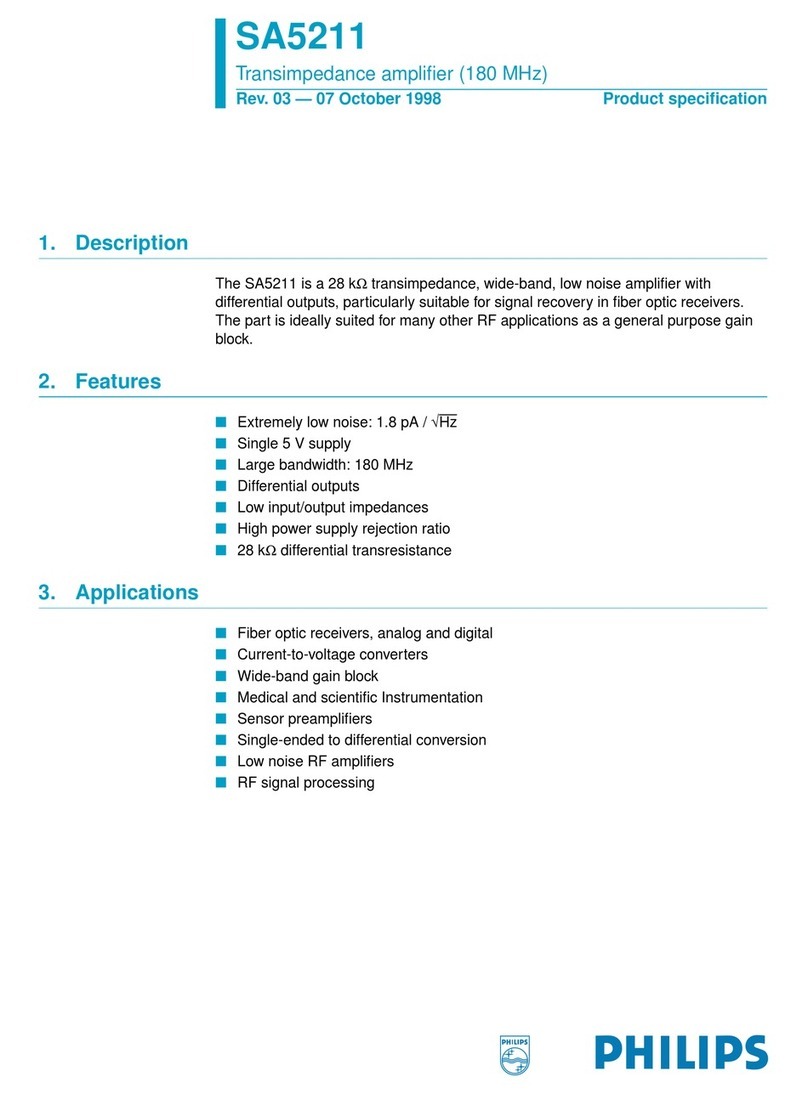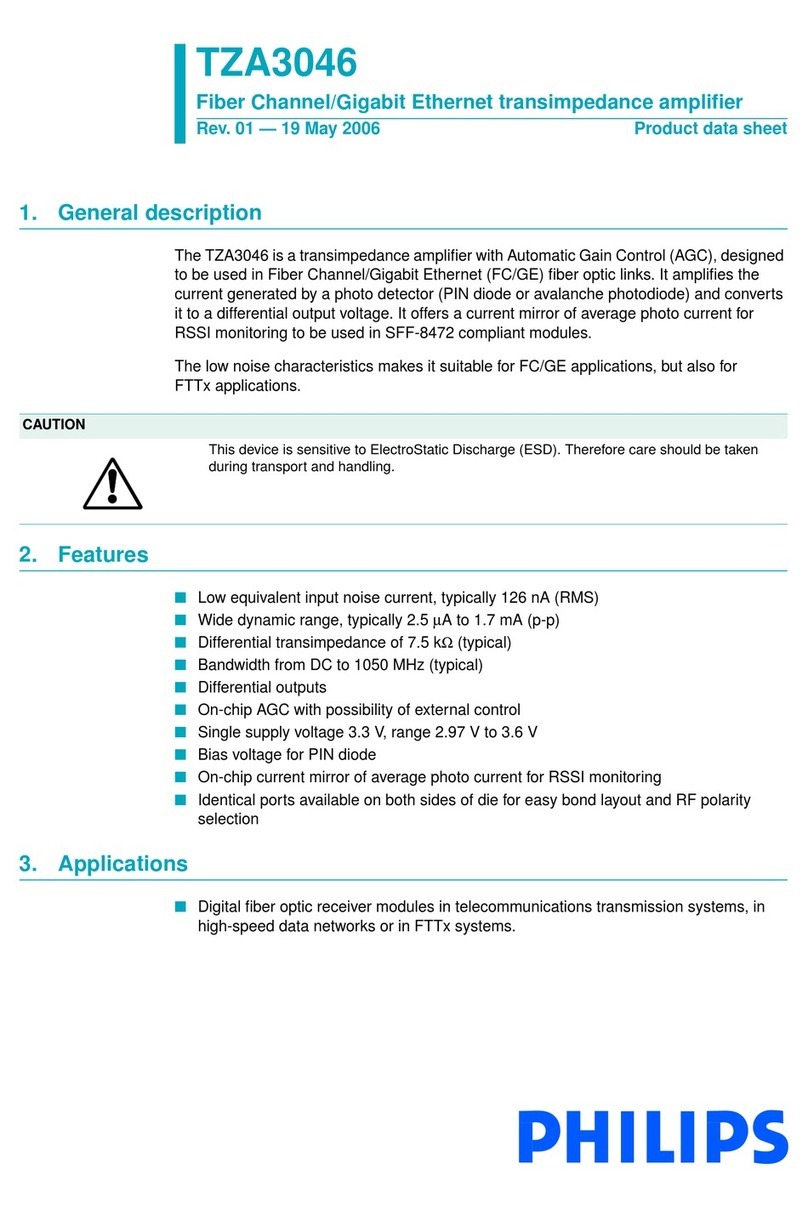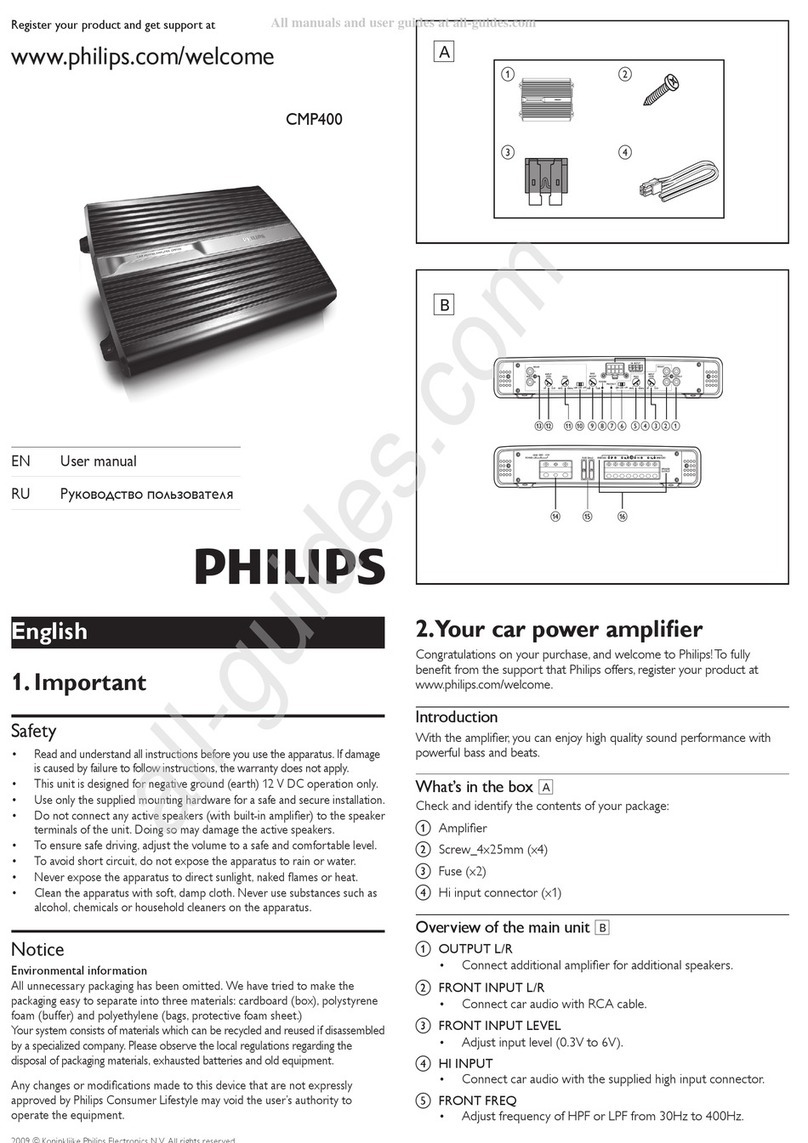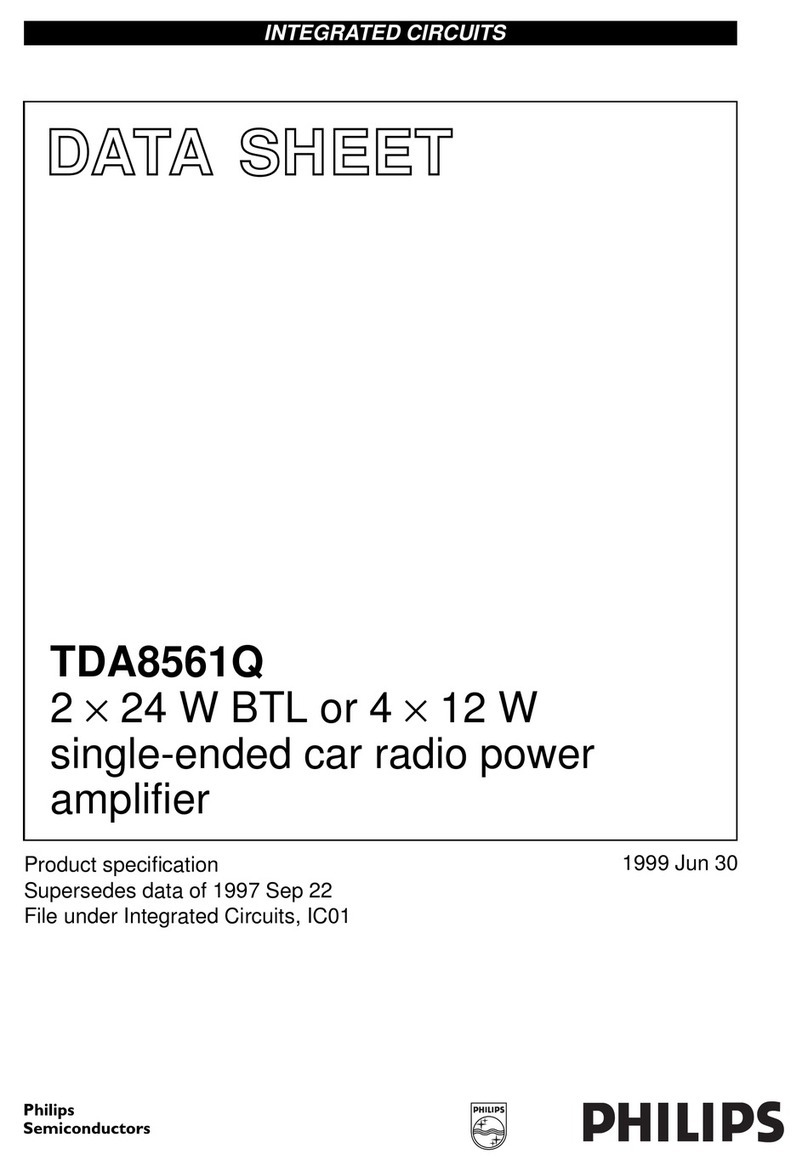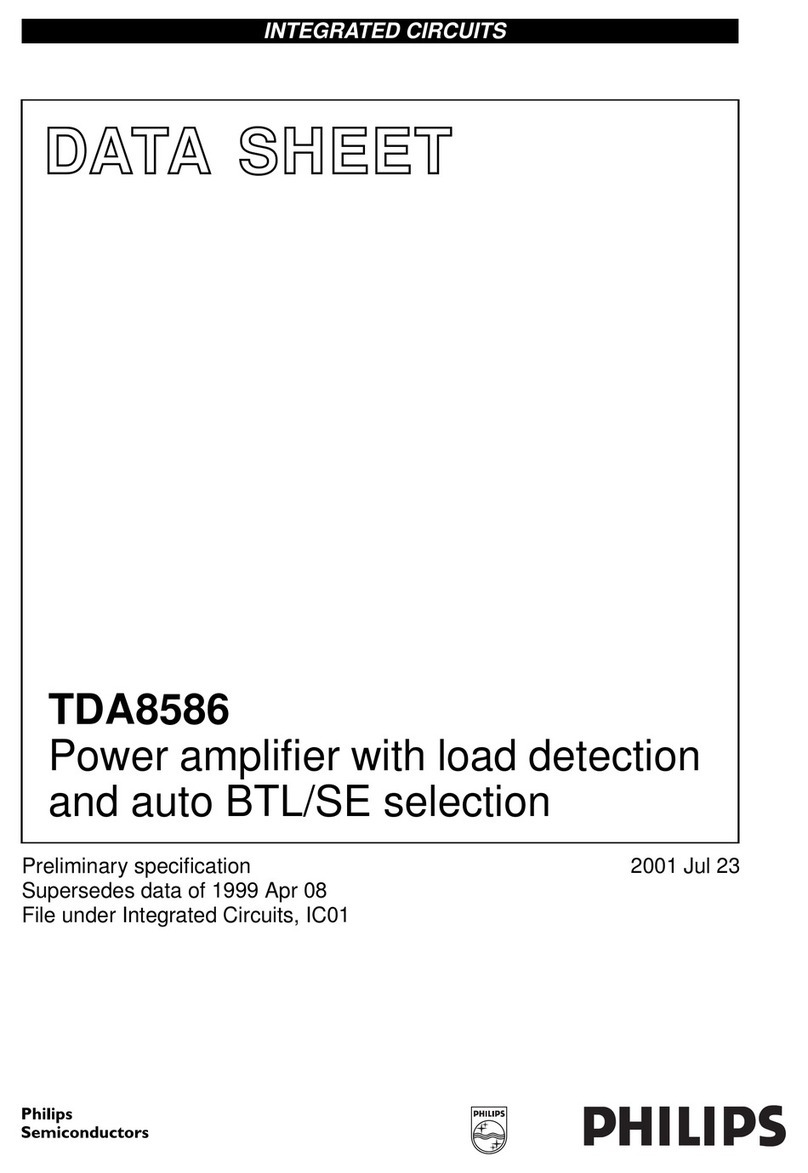OPERATING ELEMENTS AND THEIR FUNCTION
Figure
2
@
'ONIOFF' switch
Once the 'ONIOFF switch has been pressed, it will take
approximately
7
seconds before theamplifier isfully switched
on. This can be heard by the clicking of the loudspeaker
relays.
@
'48
kHz',
'44
kHz', '32 kHz' frequency indictors
For indicating the sampling frequency of the selected digital
signal source. The amplifier automatically switches to the
correct sampling frequency and the corresponding indicator
then lights up.
@
'VOLUME' control
Insidethe amplifierthere are four volume controls,the reason
for this being to improve the signal/noiseratio at low volume
levels.
@
'PHONES' terminal socket for stereo headphones
For connecting stereo headphones with an impedance of
8
-
1000
ohms. By releasing the 'SPEAKERS' switches
@,
it is
possible to listen separately through the headphones.
@
'SPEAKERS' A and B switches
For switching on and off the loudspeakers, which are
connectedtothecorresponding loudspeaker connections
@.
@
'REC SELECTOR' recorder selection switch
For transferring the signal from the signal source to be
recorded to the terminal sockets
@
'TAPE
1
REC' or
@
'DAT/TAPE2 REC'.
If norecordingis being made,thisswitch shouldpreferablybe
in the 'OFF' position.
For copying sound recording tapes from 'TAPE
1'
to 'DAT/
TAPE 2' and vice versa.
Note:
For further information on the use of this switch, see
section on
'Use with a recorder'
under the heading
'OPERA
-
TION'.
@
'BASS/TREBLE' controls
Usingthese controls you can set the base and treble to your
own personal preference. The neutral position is
'0'.
@
signal source direct switch with 'SOURCE DIRECT' indicator
If this switch is pressed, the signal from the connected signal
source will be channelled directly via the volume control and
'Tone Defeat', with a flat curve, to the final amplifier and the
sound will be amplified.
@
signal source selector switches with 'PHONO', 'AUX
l',
'AUX
2',
'TAPE
l',
'DAT/TAPE 2', 'TUNER/DBS' and 'CD'
indicator.
Forplaybackof theselectedsignal sourcewhichisconnected
to the corresponding terminal sockets.
@
'LOUDNESS' correction switch
Switch for extra amplification of the bass and treble at low
volume levels.
@
'DIGITAL' analog/digital switch with indicator
Depending on the signal source connections to be used, the
switch must be in the 'ANALOG' or 'DIGITAL' position.
When switch
@
is not pressed: 'ANALOG' position, indicator
does not light up. (This is the setting for units connected to
the connections
@,
@,
0,
@,a,
@,
@, @
and
@.)
Whenswitch@ispressed:'DIGITAL'position, indicatorlights
up. (Thisisthe setting for units connected to the connections
@,@,
@,
Q
and
63.1
@
'BALANCE' control
Used to give a balanced adjustment of left and right stereo
channels.
OPERATION
Use with the signal source selection switch
1.
Ensure that the 'VOLUME' control
@
is not on maximum.
This should preferably be set at a lower position to prevent
damage to the loudspeakers.
2.
Switch on the amplifier using the 'ONIOFF' switch
@.
The lighting around the volume control
@
and above the
'ON/OFF' switch
@
lights up.
3.
Switch on the loudspeakers using the 'SPEAKERS' switch
-
(es)
@.
When button
'A'
is pressed: for loudspeakers connected to
the loudspeaker connections
@
'system A', see figure 3.
When button
'B'
is pressed: for loudspeakers connected to
the loudspeaker connections
@
'system B', see figure
4.
4.
Switch on the required signal source and prepare this for
playback.
5.
Onthe amplifier, pressthe selection switch
@
appropriatefor
the signal source. The corresponding indicator will light up.
6.
If youare using adigital signalsource,press 'DIGITAL' switch
0.
The corresponding indicator will light up.
7.
Slowly adjust the volume level using 'VOLUME' control
@.
If you hear nothing and no indicator lights up:
-
The amplifieris not switched on.
-
The amplifieris not connected to the mains supply.
-
There is no power at the mains.
If you hear nothing but an indicator does light up:
-
Check selection switch
@
is in the correct position.
-
Check that the selected sound source is working properly
-
Check that the loudspeakers are switched on.
-
Check that the volume control is set high enough.
Do not leave it on
MAX!
-
Check that the loudspeakers are properly connected.
Before checking this, the amplifiermust be switched off.
8.
Adjust the stereo balance using 'BALANCE' control
@.
9.
Adjustthe bass and treble usingthe 'BASS/TREBLE' control
w.
10.lf required,atalowvolumelevel,switch ontheloudnessusing
the 'LOUDNESS' correction switch
@.
If sound comes from one side only:
-
check that the position of the balance control is correct.
-
check the connection to the faulty loudspeaker.
-
check the connection between the signal source and amplifier.
-
if using stereo headphones, push the plug fully into the terminal socket.
If the amplifier hums, buzzes or howls duringrecord playback.
-
Check the earthing of the record player.
-
Check that the connection plugsareinserted far enoughinto the terminal
sockets.
-
Ensure that the connection cable to the recordplayer is as far away as
possible from the mains cables (hum)or
TV
circuits (buzz).
-
The amplifier may howl as a result of acoustic feedback from the
loudspeakers to the record player. This may occur particularly at high
volume levels.
In such a case, change the position of the loudspeakers.
Use with the signal source direct switch
Fordirectplaybackfromasignalsource selectedusingthesignal
source selection switch
@.
If you use this switch, the signal from the connected signal
source will be channelled directly via the volume control and
'Tone Defeat',with aflatcurve,tothefinal amplifier andthesound
will be amplified.
The advantage of thisisthatthesoundsignalpassesthroughthe
lowest possible number of circuits and is therefore reproduced
most naturally.
Playback
1.
Switch on the amplifier using 'ONIOFF'
a.
2,
Switch on the loudspeakers using 'SPEAKERS'
@.
3.
Switch on the required signal source and prepare this for
playback.
4,
If youare using adigital signal source,press 'DIGITAL'switch
The corresponding indicator will light up.
5.
On the amplifier press 'SOURCE DIRECT' switch
@.
